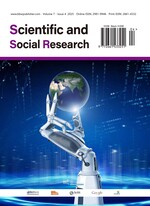Abstract
This study aims to improve the prediction accuracy of the diffusion trajectory of radioactive pollutants in the atmosphere. First, based on the traditional Gaussian plume model, the model is improved by introducing two key control factors: rainfall intensity and ground roughness. Secondly, the factors affecting gas diffusion under different rainfall intensities and ground roughness are analyzed, as well as the diffusion characteristics of radioactive pollutants in the atmosphere under the influence of these two factors. Finally, taking the radioactive nuclide leakage of Daya Bay Nuclear Power Station as an example, according to the analysis of the concentration distribution characteristics in the downwind and crosswind directions, the results show that rainfall intensity and ground roughness have a significant effect on the diffusion concentration and diffusion range of radioactive nuclides. With the increase of rainfall intensity and the improvement of ground roughness, the diffusion concentration is significantly reduced, and the area of the dangerous area is significantly reduced. Compared with the traditional simulation results, the improved model is reasonable and has certain guiding significance, which provides a scientific basis for nuclear accident emergency response and risk assessment.
References
Qi LL, 2023, Study on the Adsorption and Migration of Se (IV) and Sr (II) in Granite and the Influence of Crack Filling on it, thesis, Jilin University.
Korsakissok I, Mathieu A, Didier D, 2013, Atmospheric Dispersion and Ground Deposition Induced by the Fukushima Nuclear Power Plant Accident: A Local-scale Simulation and Sensitivity Study. Atmospheric Environment, 2013(70): 267–279.
Leelossy A, Meszaros R, Lagzi I, 2011 Short and Long-term Dispersion Patterns of Radionuclides in the Atmosphere around the Fukushima Nuclear Power Plant. Journal of Environmental Radioactivity, 102(12): 1117–1121.
Mikkelsen T, Thykier-Nielsen S, Astrup P, et al., 1997, MET-RODOS: A Comprehensive Atmospheric Dispersion Module. Radiation Protection Dosimetry, 73(1–4): 45–55.
Chino M, Hiromasa N, Haruyasu N, et al., 2011, Preliminary Estimation of Release Amounts of 131I and 137Cs Accidentally Discharged from the Fukushima Daiichi Nuclear Power Plant into the Atmosphere. Journal of Nuclear Science and Technology, 48(7): 1129–1134.
Li H, Zhang HS, Cai H, et al., 2013, Numerical Simulation of Pollutant Diffusion and Accident Release Source Term Assessment of the Fukushima Nuclear Power Plant Leak Accident in Japan. Journal of Safety and Environment, 13(5): 265–270.
Hu XF, Li D, Huang H, et al., 2014, Modeling and Sensitivity Analysis of Transport and Deposition of Radionuclides from the Fukushima Dai-ichi Accident. Atmospheric Chemistry and Physics, 14(20): 11065–11092.
Leelossy A, Meszaros R, Kovacs A, et al., 2017, Numerical Simulations of Atmospheric Dispersion of Iodine-131 by Different Models. PloS one, 12(2): e0172312.
Wang KS, 2012, Research on Rapid Estimation Method of Chlorine Leakage Concentration Distribution Based on Gaussian Model. China Occupational Safety Science and Technology, 8(9): 33–37.
Hua FJ, 2017, Study on the Removal Characteristics of Urban Aerosols by Rainfall and Deposition Effects, thesis, Donghua University.
Pirouzmand A, Zahra K, Peyman D, 2018, Atmospheric Dispersion Assessment of Radioactive Materials during Severe Accident Conditions for Bushehr Nuclear Power Plant using HYSPLIT Code. Progress in Nuclear Energy, 2018(108): 169–178.
Sun ZK, 2013, Further Study on Gaussian Plume Diffusion Model. Environment and Sustainable Development, 38(5): 107–109.
